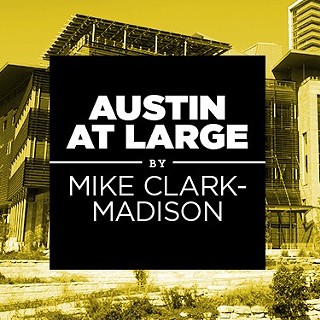Austin at Large: The Center of Attention, Again
Austin continues its golden-child ways as the rest of America goes pear-shaped
By Mike Clark-Madison, Fri., Dec. 4, 2020
Since 1982, the Urban Land Institute, the preeminent real estate trade group, has published its Emerging Trends in Real Estate report (a coproduction with the consultants at PwC), which among other things identifies the hottest markets in America. Since 2015, Austin has been either No. 1 or No. 2 on the ULI list; in the 2020 edition we were No. 1, and in the recently released 2021 edition we're back at No. 2, behind Raleigh/Durham.
This sort of distinction is now a trope for our town, part of the throat-clearing introduction and PowerPoint presentation on any issue: Austin tops the list on X. Fastest-growing metro area, best place to start a business, best place to raise a family, whatever. So our persistent perch atop the ETRE rankings would be wholly un-newsworthy, except for what it says about Austin in a year where the "trends" in real estate, and thus in urban affairs, have been turned completely upside down.
Once again, as the rest of America goes pear-shaped, Austin is expected to be resilient and rather lightly impacted by this downturn. Indeed, the specific 2021 trends ULI calls out in its nationwide overview are ones that both national and local industry leaders think play to Austin's advantage. Yes, people and companies really are moving out of high-cost, high-density gateway cities, both to the suburbs and to other parts of the country, like Austin. Yes, while there's definitely a shift back to single-family housing and away from mixed-use urban infill, people still want those residential options in what ULI calls "18-hour cities" that punch above their weight in cultural vitality, like Austin. And so forth.
You're Doing Amazing
Things like the ETRE report are always good reminders that as much as we tremble under the pressures we feel within our city, people outside the metro area, and especially outside our state, often think we're crazy for acting like Austin is crowded or expensive, or has bad traffic, or is otherwise on the road to ruin. And that's where the decisions that dictate how much we grow and in what ways are really made – by the people and businesses and investors who want a piece of us, not by anything we do to attract or repel them.
It's also a useful reality check in the wake of an election cycle where, as is usually the case, Austin paid great heed to the feelings of its most vulnerable residents and institutions, the people who've benefited the least (in their view) from the permanent boom time. It was especially clear around Project Connect; opponents viewed Proposition A's support from icky developers (that is, ULI members) as an obvious sign that the transit plan was nine kinds of bad. The rest of the country, including the other 18-hour cities that are magnets for growth and investment, thinks it is insane that Austin would see the chance to do something, anything, to improve its mobility networks as less than a necessity.
The other 18-hour cities in ULI's rankings are familiar ones in Austin's peer set – Charlotte, Denver, Minneapolis, Nashville, Portland, Raleigh/Durham, Salt Lake City, San Diego, and Seattle. (Five of them, including us, are in the Top 10 of all U.S. markets.) How many of you reading this chose Austin over one of these places, or are eyeing a move to one of them in the future? We're expecting more of the former than the latter; the estimates cited by ULI have the Austin metro area growing at 2.1% annually for the next five years, the highest of any of the 80 markets it ranks by a fair margin.
Yet there is and will be continued churn; the same estimates project annual net migration into Austin at 45,000 per year, which sounds colossal (a whole new Kyle added to the region each year) but is actually a lot less than it would be if we didn't also say goodbye to a lot of people, not just graduating students. The Charlotte market, which is only a bit larger than Austin (2.68 million vs. 2.35 million), is expecting greater net migration (58,200 per year) despite having a lower growth rate (1.3%), because the people moving there are different.
Ah, to Be Forever Young
Looking at the age distribution of residents in these markets illuminates some of this texture. Charlotte's is much like the nation as a whole: 32% 24 and under, 28% 25-44, 26% 45-64, and 15% over 65; nationally, it's 31/28/25/17. Austin's is 35/31/22/12. Despite prior years' warnings of "silver tsunamis" and Williamson County's emergence as a retirement haven, the pig inside Austin's demographic python remains young adults and families. (Of the other 18-hour cities, the one closest to this distribution is Salt Lake.)
As we gird ourselves for the beginning of a new sociopolitical era, we have to keep these and other true facts about ourselves in mind. We must deliberately force our leaders and discourse to center the people who are really "typical Austinites," who are generally not the people who get deeply engaged in our political scenes. (They do dive deep into our cultural scenes, which helps us at the Chronicle see and hear them more than others might.) When we do have to pick back up the unsolved mysteries we abandoned with COVID-19, most obviously the Land Development Code Revision but also our "reimagined" public safety systems, this intentionality will matter. But take heart! Our future new neighbors think we're amazing just as we are.
Got something to say? The Chronicle welcomes opinion pieces on any topic from the community. Submit yours now at austinchronicle.com/opinion.







